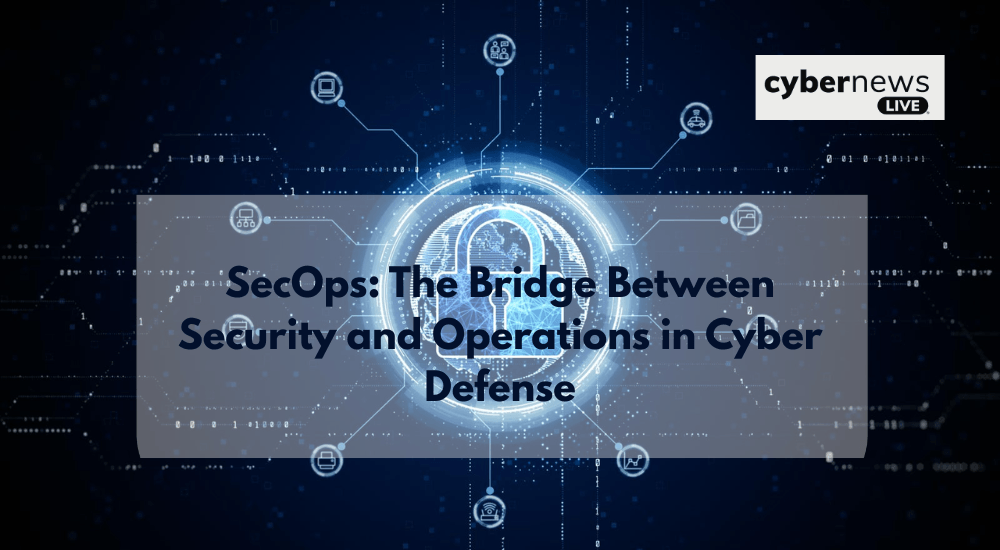
Security Operations (SecOps): The Bridge Between Security and Operations in Cyber Defense
The speed and sophistication of cyber attacks are growing exponentially in today’s digital landscape. Traditional reactive security measures are no longer sufficient. Organizations require a proactive, integrated, and collaborative strategy to stay ahead of evolving threats. This is where Security Operations (SecOps) play a vital role.
SecOps is a strategic and collaborative approach that embeds security practices throughout an organization’s operational framework. Its core objective is to bridge the traditional divide between IT security and IT operations teams, fostering a unified effort to safeguard the integrity of IT infrastructure and processes. By promoting cross-functional collaboration, SecOps strengthens an organization’s capacity to detect, respond to, and recover from security incidents with greater speed and effectiveness.
Here’s a closer look at the role and importance of SecOps.
The Importance of SecOps

As digital ecosystems expand, so does the attack surface, making security frameworks not just beneficial but essential. SecOps helps organizations navigate today’s evolving threat landscape effectively.
Here are the key reasons why SecOps is vital for modern businesses:
Proactive Risk Mitigation
SecOps enables organizations to proactively identify and mitigate security risks before they escalate into critical incidents. By fostering collaboration between IT security and operations teams, vulnerabilities can be addressed swiftly, significantly reducing the danger posed by cyber threats.
Operational Synergy and Efficiency
Integrating security practices allows IT and operations teams within the organization to collaborate more effectively. This convergence of disciplines can improve decision-making, streamline workflows, and enhance efficiency.
Enhanced Compliance
SecOps ensures that security measures meet regulatory requirements and industry standards. By embedding compliance into the organization’s security strategy, businesses can mitigate the risk of incurring costly fines and prevent potential damage to their reputation due to non-compliance.
Better Incident Response
A structured SecOps framework enhances incident detection, response, and recovery speed and effectiveness. This minimizes operational downtime and limits the impact of security breaches on business continuity.
How to Implement SecOps
Implementing a successful SecOps framework can be complex and requires careful team planning and coordination. However, by adhering to established best practices, organizations can significantly enhance their security posture and operational effectiveness. The following best practices are essential for effective SecOps implementation:
Set Clear Goals and Objectives
It is crucial to set clear goals and objectives before implementing the technical aspects of SecOps. These objectives must align with your organization’s broader business and security priorities. A well-defined direction enables a structured approach and provides a benchmark for measuring success. Common goals in SecOps include enhancing the speed and accuracy of threat detection and response, allowing teams to identify and neutralize threats in real time. Another key objective is proactive threat hunting, which involves continuously monitoring systems to uncover and address vulnerabilities before they can be exploited. Regulatory compliance is also vital, ensuring the organization adheres to industry standards such as GDPR, HIPAA, or PCI-DSS.
Establish a Collaborative Team Structure
Establishing a collaborative team structure is essential for a successful SecOps strategy. SecOps relies on close cooperation between security professionals and IT operations staff, breaking down traditional silos. Start by appointing a SecOps lead, such as a chief security officer or a security operations manager, to oversee the initiative. Clearly define roles and responsibilities so that each team member understands their duties within the framework. Use collaboration tools that enable real-time updates and facilitate seamless interaction between teams. This unified approach improves threat response times and enhances overall security effectiveness.
Invest in the Right Tools and Technologies
Investing in the right tools and technologies is a cornerstone of an effective SecOps strategy. The right solutions can enhance visibility, automate routine tasks, and enable faster detection and response to threats. Look for tools that integrate well with your security and IT operations systems to ensure seamless collaboration. Key technologies include Security Information and Event Management (SIEM) systems, Endpoint Detection and Response (EDR) tools, threat intelligence platforms, and automated incident response solutions. Equipping your SecOps team with the right technology empowers them to work more efficiently and proactively defend against evolving threats.
Develop and Implement Security Policies
Developing and implementing clear security policies and procedures is vital for aligning your SecOps program with organizational goals and ensuring consistent, effective security practices. These policies serve as a framework for daily operations and incident handling. Start with an Incident Response Plan (IRP) that outlines how the team will detect, assess, mitigate, and recover from security incidents. A strong change management protocol should also be in place to ensure that infrastructure changes, such as patches or upgrades, are carried out securely without disrupting business functions.
Continuous Monitoring and Real-Time Threat Detection
Continuous monitoring and real-time threat detection are critical to an effective SecOps strategy. By constantly watching your IT environment, your team can identify and respond to threats as they occur, reducing the risk of damage or data loss. A 24/7 monitoring system allows for proactive threat detection and quick mitigation. Network traffic analysis is also essential for identifying unusual activity, such as data exfiltration or unauthorized lateral movement. Additionally, behavioral analytics powered by machine learning can help establish normal user and system behaviors, flagging anomalies that may signal a potential threat. This continuous, real-time vigilance forms the backbone of a resilient SecOps operation.
Focus on Security Culture and Training
Focusing on security culture and training is essential to the success of any SecOps initiative. Building a strong security culture means making cyber security everyone’s responsibility, not just the IT or security teams. This starts with training employees at all levels to recognize threats like phishing, use secure passwords, and follow access control policies. Security awareness training should be continuous, not a one-time event, and regularly updated to address emerging threats and evolving best practices. When employees are informed and engaged, they become a strong first line of defence against cyber attacks.
Conclusion
SecOps presents a powerful approach to improve an organization’s security posture. By bridging the gap between security and operations, organizations can build resilient infrastructures, respond faster to threats, and deliver services with greater confidence. Embracing SecOps is no longer optional. It is the essential foundation for navigating the complexities of today’s cyber landscape and building a truly resilient defence.
Level up your cyber defence with Cyber News Live. Get the latest threat intelligence, expert analysis, and real-time updates delivered straight to your inbox.




